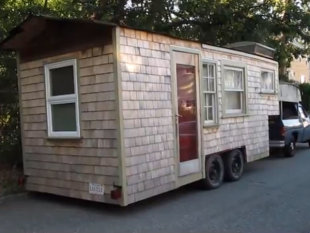Here's a look at why these tiny home-dwellers chose to downsize and how they made the transition:
Low (or no) mortgage. Webster and Radachowsky have no mortgage on their homes, which can be freeing both financially and personally. "My life is less expensive, which gives me more time to enjoy it," says Radachowsky, who goes hiking, writes songs, build guitars, and grows food in a small garden.
Fivecoat-Campbell took out a mortgage, but she says it might be preferable to go mortgage-free on a smaller home. Back when she and her husband owned two homes, they were on a balloon payment for the lake house and worried that an interest rate hike might price them out of the house. They spent eight months searching for a bank that would allow them to refinance. "[Companies] couldn't find anything comparable to the house," she says. "There are small houses and trailers but nothing like our house. That's where we ran into trouble refinancing, but we did find a local bank that would refinance us."
Lower utility costs. Tiny house-dwellers have several options for utilities. If building codes allow it, Diedrickson says they can install electricity and plumbing as they would in a regular house, but that's generally more expensive than going off the grid. "The majority of the world still uses outhouses," he points out. "There are different toilets on the market, like composting toilets, that in essence turn your waste into ash or usable compost, so you can bypass having to have a septic system at all."

Tidak ada komentar:
Posting Komentar